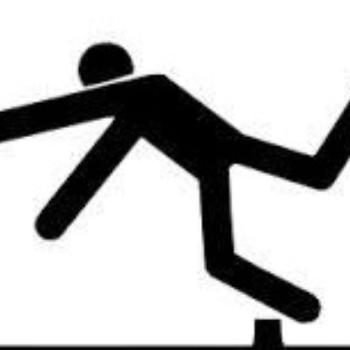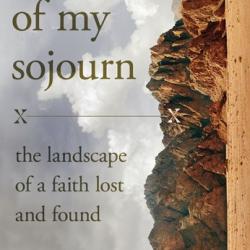On the other hand, it is important to note that these groups were not monolithic, either politically or theologically. Some of the elite Jews and priests supported Jesus. John the Baptist was a priest (Lk. 1:5-8), and "a great many of the priests became obedient to the faith" of Jesus (Acts 6:7). Likewise early Christians included scribes (Mt. 8:19; Mk. 12:28-34), Pharisees (Acts 22:3, 26:5), and aristocrats like Nicodemus (Jn. 3:1-14, 7:50-52, 19:39-40) and Joseph of Arimathea (Jn. 19:38; Mk. 15:43; Lk. 23:50-51), both of whom were members of the ruling Sanhedrin council. Nonetheless, it is clear that most of the leaders of the Jews opposed Jesus, and some plotted his death.
From Whence the Messiah? (Jn. 7:27-31)
During this discussion at the temple, one group insisted that Jesus could not be the Messiah because "we know where this man comes from [Galilee], but when the Messiah appears, no one will know where he comes from" (7:27). As I have noted before, there were many different factions among the Jews, and many differing Messianic expectations. This objection came from a faction that believed that the Messiah would be a supernatural, angel-like figure whose appearance would be miraculous and overwhelming. (In a sense, this group believed the appearance of the Messiah would parallel what many Christians believe about the second coming of Jesus.) The foundation of this belief was Daniel 7:13, where the Messiah appears in "the clouds of heaven," an idea also found in other biblical and non-canonical Jewish writings (Mal. 3:1; 1 Enoch 46, 48:2-6; 2 Esdras 7:28; 4 Ezra 13:51-52; 2 Baruch 29:3; Talmud, Sanhedrin 97a). Since Jesus' parents and siblings were known (6:42), and he was known to have come from Galilee (7:41), he did not fulfill the expectations of the Hidden Messiah.
Jesus' response was simply to emphasize that his true origin is from the Father in heaven (7:28-29), precisely as Daniel 7:13 predicts. At this point, however, Jesus' claim was still an assertion, for his "hour" has not yet come (7:30). But it was an assertion supported by his signs. These signs were sufficient to convince some people (7:31), but by no means all. The purpose of his coming "hour" was his glorification, which would provide clear evidence that he is the Messiah sent by the Father.
To the Dispersion? (Jn. 7:32-39)
As noted above, the Pharisees and Chief Priests wanted to arrest Jesus for blasphemy and had sent officers (upēretas, "assistants," probably meaning the Levite temple police) to arrest him (7:32), though they ultimately failed to fulfill their orders (7:30, 45-47). In this context, when Christ spoke of returning "to him who sent me," so that they "will not find him" because he is going "where you cannot come" (7:33-34), the crowd might have been forgiven for thinking that Jesus was planning to go into hiding to escape arrest. Some thought he might be planning to go into the Dispersion (diaspora) to teach the Jews living among the Greeks (7:35)—the largest community being in Alexandria. Their failure to recognize that Jesus had been sent from the Father meant they failed to understand that when he returns to "him who sent me" (7:33; 17:8, 18, 21, 23, 25) it means that when his hour comes Jesus will return to the God the Father (8:14, 22; 13:3, 33, 36; 14:4, 5, 28; 16:5, 10, 17).
Water from the Belly? (Jn. 7:37-39)
Repeating his earlier waters of life allegory (Jn. 4:10-15), Jesus proclaims "if anyone thirsts, let him come to me and drink" (7:37). The context of this statement are scriptural allusions to waters of life (Isa. 55:1; Ps. 42-43; Sir. 24:19-21, 51:23-24; Mt. 5:6; Jn. 4:10-14, 6:35; Rev. 22:1-2, 17), and the important temple water libations performed during Sukkot. The water libation (simḥat beyt ha-šoevah), was performed every day during Sukkot along with prayer for the autumn rains. Priests made daily processions from the pool of Siloam to the Temple with vessels full of water mixed with wine which were poured out on the altar (Num. 28:7; Mishnah, Sukkah 4.9-10; Isa. 12:3). When Christ speaks of water in the temple on Sukkot, his listeners would have inevitably thought of these water libations. In this context, when Jesus proclaims "if anyone thirsts, let him come to me and drink" (7:37), he is alluding to the temple invocations to God to bring the winter rains, the indispensable source of life in arid Judea. Jesus, as God, is thus the source of the waters of life (Isa. 12:3, 44:3, 49:10, 58:11; Ezek. 36:25-27, 47:1-11; Joel 3:18; Amos 9:11-15; Zech. 13:1).
Verse 38 raises an interesting question. Here Jesus quotes as scripture: "As the scripture (graphē) has said, 'Rivers of Living Water will flow from his stomach (koilia).'" The perplexing problem is that there is in fact no scripture in the Hebrew Bible that offers a source for this statement. Jesus is apparently quoting a scripture that no longer exists. And this is not the only example of citing unknown scripture in the New Testament (see Jn. 77:38, 12:34; Mt. 2:23; Eph. 5:14; 1 Tim. 5:18b; Heb. 1:6; James 4:5). Some of these passages may represent the citation of non-canonical Jewish writings, such as Jude 1:14-15, which cites 1 Enoch 1:9, 5:4, and 60:8.





